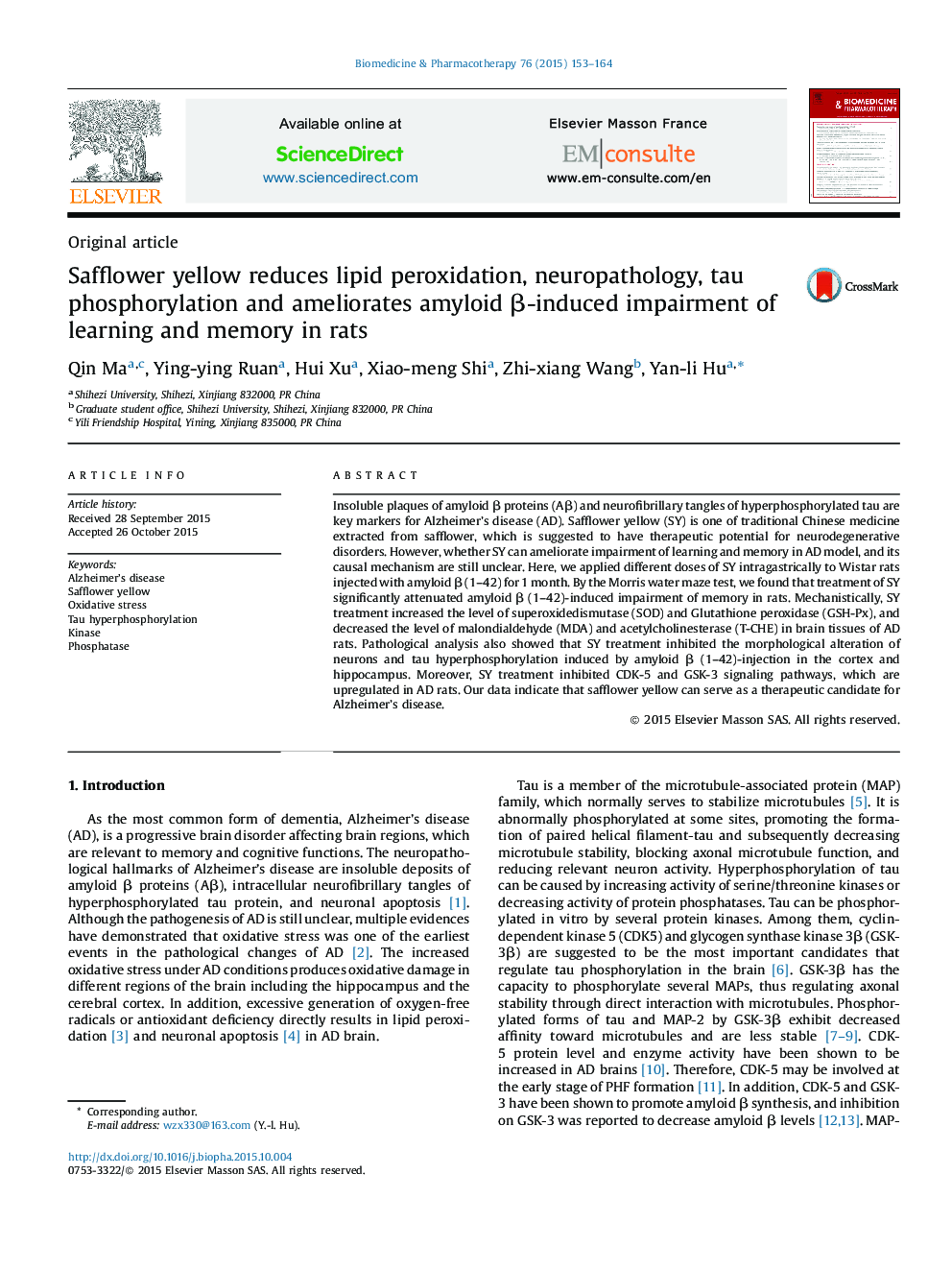| Article ID | Journal | Published Year | Pages | File Type |
|---|---|---|---|---|
| 2523888 | Biomedicine & Pharmacotherapy | 2015 | 12 Pages |
Insoluble plaques of amyloid β proteins (Aβ) and neurofibrillary tangles of hyperphosphorylated tau are key markers for Alzheimer’s disease (AD). Safflower yellow (SY) is one of traditional Chinese medicine extracted from safflower, which is suggested to have therapeutic potential for neurodegenerative disorders. However, whether SY can ameliorate impairment of learning and memory in AD model, and its causal mechanism are still unclear. Here, we applied different doses of SY intragastrically to Wistar rats injected with amyloid β (1–42) for 1 month. By the Morris water maze test, we found that treatment of SY significantly attenuated amyloid β (1–42)-induced impairment of memory in rats. Mechanistically, SY treatment increased the level of superoxidedismutase (SOD) and Glutathione peroxidase (GSH-Px), and decreased the level of malondialdehyde (MDA) and acetylcholinesterase (T-CHE) in brain tissues of AD rats. Pathological analysis also showed that SY treatment inhibited the morphological alteration of neurons and tau hyperphosphorylation induced by amyloid β (1–42)-injection in the cortex and hippocampus. Moreover, SY treatment inhibited CDK-5 and GSK-3 signaling pathways, which are upregulated in AD rats. Our data indicate that safflower yellow can serve as a therapeutic candidate for Alzheimer’s disease.
